I’ve demoed this amp in other posts, like here and here and here, but I’m not sure I’ve ever done a proper walkthrough. Here goes!
The problem with boutique amps is that there are too many of them. These days, it seems that you can throw a rock and hit another guy who is building tube amps out of his garage or on his kitchen table. And as a means of gaining notoriety, the builders all claim that they’ve created these Frankenstein concoctions of tube amps, like a Vox preamp with a Marshall power section or a tweed Fender pre with Gibson Skylark power section. And don’t get me wrong, I’ve owned many of these Frankenstein amps and a lot of them are really great. But as guitar players, we are really drawn to the magic of the gear more than the schematic of the gear. We wanna know that there’s something more romantic about the amp than a tone stack on paper or a CAD drawing on a PC. What we really yearn for is the Geppetto story. We wanna feel like there’s a white-haired old man in a woodshop, pouring over his creation- MY amplifier- and that someday this amp will come to life in ways we can’t imagine.
Well, there are some of these builders out there. One of them is Don Morris who founded Electroplex Amplifiers in Fullerton, California. I met Don at the NAMM show last year and have been a fan of his amps ever since. In particular, I love the Rocket 22, which is a 22w all-tube amp, switchable down to 14w in low power mode.
The Look
It’s Fullerton, CA, practically the home of vibey and cool music gear. So it makes sense that Don would give his amps a cool retro vibe with the Rocket logo on the front, chickenhead knobs and light-up logo on the faceplate. After all, guitar players love the aesthetics of the gear as much as the aptitude of the gear!
The Green Channel
The Green Channel is the cleaner of the two channels and is controlled by 4 knobs (Volume, Treble, Middle, Bass). At first glance, a player might simplify the amp and tube component (6v6 power section) into thinking it’s just a Fender circuit- so this Green Channel must obviously be like a Princeton or a Deluxe Reverb, depending on if the power setting is in 22w or 14w mode. But it’s so much more than that. And at 22w/14w, you can drive the amp into some tasty edge of breakup tones in the Green Channel without making anybody’s eyeballs bleed. The Treble and Bass are boost/cut controls, with the 12:00 position being the “flat” position. The mid control works in the conventional way, though. Between these three knobs, there’s so much to work with in the Green Channel. You can get Blackface sparkle, Tweedy fat cleans, and even some Marshally wooly cleans. Lots of manufacturers will say their amps are “pedal-friendlyâ€. But exactly which pedals the amp is friendly to is a significant part of the conversation. Bright amps hate fuzz pedals. Dark amps get too squishy with conventional overdrive. The good news is that the Green Channel allows multiple personalities so you can goose the mids for an appropriate base for fuzzes or you can goose the top and bottom as an appropriate bed for overdrives. And of course, there are countless shades between the two.
The Red Channel
The Red Channel is the gainier of the two channels and has its own Treble, Middle, Bass controls. With an interactive Treble and Middle knob, you can get tones that range all across the spectrum. The Treble knob acts as a Treble control, as you might expect, but the Middle knob works more like an Upper Mids/ Lower Treble knob that allows you to dial in that vocal upper midrange that makes a guitar speak forward in a band mix. It’s that upper midrange sweep that causes the amp to bark a bit in the Red Channel, and that’s where some of the magic of low-power amps lives: their ability to bark and snap when a player digs in. And of course, dialing that back will scoop out the mids like a conventional Fender Blackface circuit. The Red Channel also adds a Gain knob to dial in some preamp drive. That knob is the single knob on the amp that clears up any confusion about whether the Rocket 22 is “just another Fender cloneâ€. When dialed back, the Red Channel is capable of very cool roots rock tones. Country, Blues, Jazz, and Pop guitar tones live there. But when you dial in more gain, you can very easily get into vintage Marshall tones. And not juts fat cleans, but something that creeps towards hot-rodded Marshall tones, especially if you push the power section harder and dial in a healthy amount of mids. Marry that to the right cab, and you have moved miles away from any comparisons to Blackface Fenders. My favorite cab for the Rocket 22 is a large 1×12 with an English-made Celestion Greenback in it.
The biggest thing for me is that the Rocket 22 steps outside of the “It’s a Fenderâ€, “It’s a Marshallâ€, “it’s an Ampeg†discussion. It’s not a clone, it’s not a tribute, and it’s not a “me-too†amp design. It’s an amp that is more touch-sensitive and response than any other amp I’ve ever played, and it reminds me that the amp is as much an instrument as the guitar itself. You can “play†the Rocket 22 as much as you can play your guitar. Lighten up on your picking hand and there’s articulation and clarity, or dig in and you get squish and bloom (one of the reasons we like Marshall amps).
Like I said before, the problem in the boutique amp world is option overload. There are just too many offerings and it’s hard to wade through the selections to find the right one. Well, for my money, the Electroplex is as versatile as any amp I’ve ever owned- and frankly, I think that’s why I like it so much- I can cop tones out of lots of other amps I’ve owned, all in one place. And that’s good for the pocketbook and good for my marriage! 🙂
Until next time, tone apetit’!
-The Tone Chef
I heard a joke about guitar players yesterday that went something like… “Q: How does a guitar player make a million dollars? • A: start with two million dollars.” Hahaha. Only wives and girlfriends are laughing right now. But they’re just jealous because we guitar players would love nothing more than to be able to be able to play guitar as work, as exercise, as release from anxiety, as vacation, as a substitute for food, etc..
Many guitar players dream of one day making a living as a guitar player. I’d like to share some of what I’ve learned as a guitar player to help you along.
1. Contrary to what Brad Paisley & Keith Urban sing, DON’T start a band
As a band member, your loyalty is to the band as a whole. That means you invest time, talent, creativity, and effort into making it work. The dirty little secret is that most bands don’t become profitable. Sure, you could get a record deal, but do some research online and you’ll find that you have a better chance of getting struck by lightning while winning the lottery than you do of making millions of dollars as a guitar player. Mathematically speaking, if the band plays a club and makes $200, your 5-member band each gets $40. Boo. Consider the hours of rehearsal, tone sculpting, booking, advertising, social networking, selling merch, and performing and that $40 adds up to an awful hourly rate.
2. Become a sideman
A sideman is a pro guitar player who advertises himself or herself as a “hired gun”. In this case, you are hired by an MD (Musical Director) for a singer/songwriter, show, tour, church service, etc. and the budget is the MD’s responsibility, not yours. Gigs and services often pay at least $100 with rehearsals in the $50-$75 range. In this case, your professionalism will make or break you. Showing up prepared, on time, and in good spirits (without the help of chemical substances) will send a message that you take this career seriously. It helps to remember that, at the level when an MD is involved, money is changing hands and people have more at stake. If you play well and are professional, you make yourself look better and you make the MD look better. Everybody wins and your credibility and equity increase.
3. Become a salesman
Face it. There will come a day when you are no longer fit for the stage. That day may be 20 years from now and it may have been 20 years ago. Either way, you’re still a guitar player and want to be around them. You might try going into sales. At the retail level, you may find an independent store that is willing to hire you on a base salary plus commission on sales. It means you’ll always make a little money but if you’re successful at selling, then you stand to make a good deal more. I have known a few guys who started as a sales guy and eventually bought the store from the original owner. There’s a great tradition in selling musical instruments and it’s in some ways a higher calling than playing the instruments. If you’re a player, then it will be easier to demo the gear for potential customers and you’ll have more credibility than the guy who just wants to make money. If you don’t like the retail level, you could submit resumes to manufacturers like Gibson, Fender, Martin, Taylor, etc. and ask to join their sales team. It’s still sales, but now you’re selling to the stores who sell to the customers.
4. Become a Product Specialist
With the rising popularity of YouTube, you’re seeing more and more players doing demos of their own gear. Finding a way to monetize that is the key. Contact manufacturers whose gear you already know and love and submit a proposal that trades in-depth gear demonstrations for payment or for wholesale pricing on gear. Keep in mind, there are a lot of guys doing this these days and manufacturers are becoming overwhelmed with offers to trade YouTube videos for gear. A hard truth is that many of the boutique manufacturers don’t have the money to give away gear because their profit margins are too tight and many of the larger manufacturers have in-house demo players/ product specialists on salary.
5. Teach
Many local music stores hire guitar teachers to teach beginning students. Lessons are a great revenue source for stores and being willing to offer additional teachers to students makes them look better and more reputable. Keep in mind, the store will probably pay an hourly wage to you regardless of how much they bring in for the half hour lesson.
6. Become a provider of mail-away guitar tracks
It’s exciting to think that you could make money without leaving your house. These days, home studios are more popular than ever and records are being made in remote locations with file delivery being handled via FTP upload. In this case, you would need an AVID ProTools or Apple Logic recording rig, which would include a fast computer, the software, microphone(s), mic pres, and possibly some sound isolation materials. You could very easily be looking at $2k in investment in hopes that clients will start calling. It’s also important to note that session work is harder because the client has the luxury of playback to make sure your feel, tones, and recording habits are good enough for the budget. It’s a challenge, to say the least, because there’s empirical proof of your downfalls (which EVERY guitarist has).
With all of these options, it’s important to keep them in perspective: they are JOBS. Anyone who hires you is your employer and therefore has the right to negotiate what and how you play, what you wear, what the hours are, how much you’ll get paid. If you want to play guitar for a living, you’ll have to learn how to negotiate in such a way that you stand your ground but are non-offensive and non-adversarial. Music is a business of good guys and “hey bro” handshakes. If you’re a difficult personality, you may find that you’re getting hired less and less frequently.
Which leads me to the last point. I’ve been involved with all of these gigs (except retail guitar sales) and more. The one thing that ties them all together is that I was in the right place at the right time. NOBODY has thrown a dart at the phonebook, only to land on my name so they can call and ask if I’m a smokin’ guitar player. NOBODY. What gets gigs is to have gigs. And what it takes to have gigs is to go watch gigs, hang out with players, offer to stay late or show early so you can help other players load their gear in and out. Ask about pedalboards. Start conversations. Pay compliments when they’re appropriate. Do NOT look desperate, but spend time learning how to talk to people. Look them in the eye, be confident, and add some swagger to your demeanor.
Good luck, and stay away from my gigs. 😉
Sometimes, as a guitar player, you’ll be called upon to serve up something sweet and swirly. There are times to serve meat and potatoes, simple clean and overdriven tones, but under certain circumstances, it’s important to create tones that get the listener drunk. Here is the recipe for one and you can get it inexpensively!
1 part: vibrato pedal
1 part: delay/echo pedal
For the Vibrato, you have some options. You can use the BOSS VB-2 Vibrato pedal but unfortunately it was only made from April of 1982 to April of 1986. You can find them used on eBay for $250-$300. Another option is one of the many Chorus pedals that offer a vibrato option. There’s a pretty cool Vibrato effect in Line 6’s M13 and M9 Stompbox Modelers. I’m a big fan of those. BUT, if you want Vibrato on the cheap, try Behringer’s UV300 Vibrato which can be had for less than $30 brand new. Yay for cool and cheap pedals.
For the Delay, I’m using a Jack Deville Dark Echo and the name says it all. The repeats are dark and moody and they work exceptionally well for creating lo-fi and cinematic textures. It’s a great pedal for making the listener feel as if he or she has taken mind-altering drugs while on a cruise in the middle of the Atlantic during hurricane season. Any delay will do, though, but I think the darker the better. Also, if your delay pedal has a modulation setting, I would suggest turning it off since it could interfere with the Vibrato effect.
Tones are better left clean for more spacial swirl, but some light overdrive and bluesy licks are cool too. After all, it’s music and YOU have the power to figure out how you’re gonna serve this cocktail of tone.
Until next time, Ton Apetit!
This is an Electroplex Rocket 22. Electroplex Amplifiers is based in Fullerton, CA (home to another mega-iconic company from the guitar universe). This particular amp has 2 channels, reverb, and individual fx loops per channel. The amp is switchable from 22 watts down to 12 watts and has all the beauty of Deluxe Reverbs and Princeton Reverbs from ages past. This cab has 2 10″ Celestion Alnico Golds for extra sparkle and chime. The song is “To Make You Feel My Love” by Bob Dylan. Enjoy.
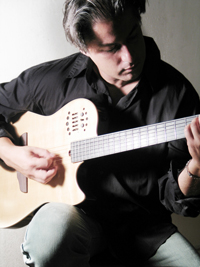 This has gone around the interwebs a few times, but I’m such a fan. A buddy of mine posted this again today and I had to share it with the Tone Chef readers. This is what happens when a band leader forgets to remove the capo from his acoustic guitar and just pushes on into the next song… without telling the rest of the band.
This has gone around the interwebs a few times, but I’m such a fan. A buddy of mine posted this again today and I had to share it with the Tone Chef readers. This is what happens when a band leader forgets to remove the capo from his acoustic guitar and just pushes on into the next song… without telling the rest of the band.
The moral of the story? Don’t use a capo. Ever.
Now, my pretties, sit back and feat your ears on THIS.
I’ll review these in more detail in the next couple of days. For now, enjoy the video walkthrough.
ton appetit,
-The Tone Chef
Although Egnater Amps has become well-known lately because of their Tweakers, Rebels, Renegades, and Tourmaster amplifiers, they started years ago as a provider of high end boutique amp makers. If you’re familiar with the Randall amps that allow you to trade out preamp modules, then you’re familiar with Bruce’s work. He designed all of the modular Randall amps and was building US-made versions in his own private shop in Berkley, Michigan. Those amps were his MOD50, MOD100, and M4 preamp.
The whole idea behind a modular amp is that you have a power section of a tube amp that is standard or fixed but you’re able to swap in and out different preamp voicings. For instance, you could load your amp with a Bassman sound and a hot-rodded Marshall Plexi amp sound and be able to switch back and forth effortlessly from those two sounds in one amp. It’s like the perfect mash-up of your favorite amps. Egnater offered 10 different modules, ranging from Fender Twin cleans all the way up to Modern High Gain Diezel amp sounds and all points in between. 5 years ago, Egnater hired me to spend some time with the modules and then write the descriptions for their main website. Having spent all that time with the different modules, I really fell in love with the BMAN and the SL2 modules since the two amps were originally built from similar circuits (Marshalls were originally launched as an alternative to the expensive import expense associated with bringing Fender Bassman amps over to Europe). I felt that a MOD50 with the A/B channels of the BMAN and the A/B channels of the SL2 would give you 4 channels ranging from fat clean to screamin’ mean. You can hear the Egnater MOD50 all over my own CD project here.
Bruce has since discontinued the modular line and I had a friend ask me to do a walkthrough of my MOD50. The video is below.
ton appetit,
The Tone Chef
Actually, it’s been a little over a year now. But I’ve had my Tom Anderson Guitarworks Short T for about a year now and can honestly say that it’s the best guitar I’ve ever owned. “Short T” is basically a Telecaster-style guitar but instead of being standard scale length (25.5″ from the nut to the saddles) it’s short-scale (24.75″ from nut to saddles) which lowers the string tension, makes the whole thing a little easier to play- more slinky, and adds some sonic girth to everything that comes out of the guitar.
I’ve owned 7 Andersons in the last 10 years (I think) and have borrowed another half dozen maybe. 4 of those I spec’d myself, others were used or retail stock. I’ve had 4 James Tylers pass through my house in the last year. I own a Custom Shop Fender strat and have had 2 others in my house this year. LOTS of guitars have come and gone in the last 10 years and lots of guitars have come and gone in the last 12 months.
In the last year, I’ve done tone workshops, an instructional video on tone, a year-long CD vanity project, and hundreds of gigs and it seems that my sweet little Black Short T keeps surprising me at every turn of the road.
If you are curious about what a Short T does, here are my thoughts:
For starters, mine is a hollow ash, black with scraped binding and body contours, maple neck +.50 oversized, M in the bridge and an Anderson something or other single in the neck, 3-way switch, no push-pull or hidden switches. Just good ol’ WYSIWYG. Mine has the drop D tuner as well.
On Stage:
This guitar is fatter than your standard tele. To me, a tele has a snarl in the upper mids and a bit of rasp to its voice. My short T has a bit of that but you lose some of the nasal honkyness that occasionally rubs me wrong with a standard tele. Also, one of the upsides to a tele is that it has a fast attack and a somewhat one-dimensional appeal that helps it to cut through the mix. Admittedly, my Short T has a little more compression and more bloom and blossom than a standard tele, but I feel like it still cuts through perfectly. And the tones are more accommodating and less brash. I also feel like this guitar works when it’s the only guitar on stage because it takes up a little more space where a standard tele can sometimes sound lonely as if the sonic footprint isn’t quite large enough to make an impression. With the M in the bridge, it’s what Tom called “one of the greatest all-time Classic Rock crunch tones”. It’s got plenty of bite thanks to the ash body, but the growl and bloom of the hollow body leans everything towards a little more brown sound, regardless of how much gain is coming from the amp. The neck single coil is syrupy sweet and regardless of how gainy the amp/pedal combination is, always sounds articulate and tight. The middle position is my go-to for the pretty and the clean stuff. It’s my Gretsch-in-a-switch sound.
In Sessions:
This one is a little harder to quantify because the approach to tracking is different from the approach to playing live. In tracking, we like to find little hidden corners of the EQ spectrum in which to hide a cool guitar part. It’s ok to have a bright, scrapey sounding guitar part that matches with a honky and woofy old Silvertone amp tone. But between the three pickup sounds, and the ability to roll the volume off and on, it is my secret weapon. While doing my CD, I grabbed my short T more than any other guitar when it came time to do solos. It’s the guitar that is all the solos on “Just So” and “London”, and carries most of the melody on “Strong”.
I know there has been a good amount of talk about making a Short S, and lots of speculation about how that might sound coming from Anderson World Headquarters. But if that never comes, and you’re looking for the guitar that could potentially change your life (make you run faster, jump higher, grow thicker hair, be more attractive to the opposite sex, etc.), it’s worth giving the Short T a try.
Thank you, please drive thru….
I’d like to start walking you through some of the gear that was used on the recordings as well as the stories behind the songs themselves. In these posts, you’ll learn some recording techniques, so creative use of guitar effects, and some insight into how guitar players compose. I hope you enjoy this multi-part series.
For starters, August was one of the last songs written for the Strong CD (which you can purchase here on the site in physical form or here on iTunes) and was the least planned when I got to the studio on tracking day.
It opens with a cool drum thing from Dave Owens and starts with a rhythmic hook in the key of G. The hook is very poppy and I think I might’ve actually lifted the idea from an Andy Timmons solo. He inspires me so and I find myself trying to sound like him. The thing about this tune is that it started with me running a drum loop in Apple’s GarageBand app and just noodling over it. I set a goal to NOT do any soloing or fills but just to build rhythmic ideas to build into a song. If you suffer through the whole thing, you’ll see how the song was born in pieces. august_demo One of the things you won’t hear in that demo is the section where I solo over an Eb – F – Gm section. Literally, I felt like the song had nothing special about it and I created a C section/ bridge to change things up. It also allowed me to build some tension and release with that Gm chord since the song is in G major. You hear the obvious change on the last chord of the solo.
That rhythm guitar was recorded with a Fender Road Worn 50’s Telecaster into a 60’s Silvertone 1482 amplifier (with the coveted diamond-shaped baffle). The cool thing about that amp is that it has a very round, dark, syrupy tone to it which married well with the brightness of the tele. In the tracks, I wanted that rhythm guitar to bury well and not steal too much focus from the lead guitar or from the ear candy parts.
In the next installment, I’ll start breaking down some of the specifics of the ear candy and solo parts that went into this record. I’ll spend some time discussing the specific guitar, Adrenalinn pedal parts, and other stompbox elements that created the final song.
Backing Tracks for the CD are up and available now. Click here to get to the backing tracks page.

This project began at Eldorado Recording Studios in Burbank, CA on August 4th, 2009 and is now available a year later. If you’d like to purchase, click here and wait for the order form to load. Or you can go to iTunes and get it. I would recommend ordering the physical copy through this site, however because the audio quality is much better in physical cd format. (The price is the same at both places.)
Some project fun facts:
- • I paid for every step. Paid the band. Paid the studio. Paid for mixing. Paid for mastering. All so your listening experience was better. Actually, I’m lying. Guitar faces and profanity came free of charge.
• Most of these songs started as singer/songwriter tunes with lyrics. I recorded an instrumental cd, however, because I’m tired of animals showing up at my doorstep when they hear me sing. To hear the vocal version of “london”, go to TheToneChef.com/london.
• The players are effing awesome. Their credits include: Pink, The Lion King, Lilith Fair, Tommy Walker, Gwen Stefani, Hilary Duff, A Fine Frenzy, Brooke Fraser, Thomas Dolby and lots more. Trust me, I’m good, but I was a hack compared to the rest of the players.
• a member of the band, Linkin Park, gave me the earphones that I used to track my guitar parts in my home studio. Early demos were tracked on a home recording rig he gave me as well. I think that means I’m gonna sell 50 million of these babies.
• This project was Co-Produced by Chris Steffen. He also engineered it and mixed it down. Chris was the assistant engineer on John Mayer’s Heavier Things and his car runs on vegetable oil.
• the main rhythm tracks were recorded at Eldorado Recording Studios in Burbank. A 50 yr old studio with a rich history. Recent recordings include Jewel, My Chemical Romance, Avenged Sevenfold, Ben Harper and Relentless 7, The Cars, A Fine Frenzy and Jane’s Addiction.
• Two of the songs on “Strong” are cover tunes. “As I Am” (The Dailies) & “Landmine” (Chris Cox) are both available on iTunes and I played guitar on both of those records.
• I believe one of the greatest living guitarists is a guy named Tom Bukovac in Nashville. He did this YouTube video and I stole a little guitar lick that comes at 1:46 in the video. I created a whole little piece and it became the song “1:46”
• For the music nerds… in the tune, “When I’m 56”, the bridge is comprised of 5-beat phrases over a 6/8 time signature. It feels like 5 over 6 and is a play on the song title. Hard to dance to, but fun to play guitar solos over.
• Who is this “Luke” and why is there a prayer for him? On 8/4/09, while I was tracking this record, a friend was undergoing a kidney transplant with her very young son. I literally spent the day playing while praying.
• “Fumble” is my attempt at sounding like another guitar player I love named Andy Most. His music is bouncy and fluid and angular and makes me feel drunk on wedding champagne. Early mixes of this song had the drums all in the left speaker for MORE of a drunk effect.
• “Landmine” has almost a dozen different versions recorded. From screaming Ozzy to smooth jazz and NONE of them felt right. On the last day before the CD was due, I tracked the final in 20 minutes. To hear a screaming rock version, visit TheToneChef.com/landmine.
• In contrast to how hard it was to settle on “Landmine”, “Just So” was done with an Anderson Short T into an Egnater Tweaker with a touch of delay in the loop. The solos played themselves. The whole thing was done in 2 takes. boom.
• This is more for the musicians among us… there are 2 tunes on the record that are just guitar interludes with no band. The other 8 will be available in “naked tracks” for free. That means you can have the backing tracks to play along and make your own versions of my songs. Please do me a favor, if they’re better than mine, keep them to yourself.
• “Mastering” is the final step of the recording process. It’s like one last car wash to make sure levels are right and that the recording is radio-ready. “Strong” was mastered by Richard Dodd, a Grammy-winning mastering engineer who also mastered the last Dixie Chicks record.
Next week, I’ll have more details on the cd as well as ordering information. But for now, we can all be excited. I hope you enjoy it as much as I’ve enjoyed making it.
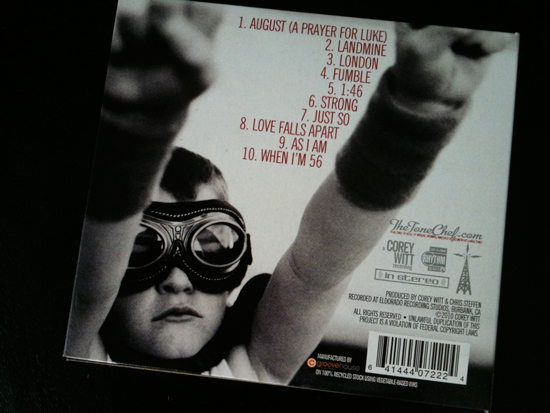
As I mentioned before, I shot an instructional video last week and as a supplement to that, we added a 10-minute demo of the upcoming James Tyler Variax from Line 6. You can see the video below. Dig in!
So two weeks ago I went down to S1 Studios in Fullerton, CA and taped an instructional video for a company called Worship Guitar Now. The owner is both a good friend of mine as well as an awesome guitar player. The early rough footage looks good and the video will be available for download and hard copy purchase this Fall.
Topics covered include the basic food groups of guitars, the basic food groups of amps, the basic food groups of effects, how to play with a second guitar player, and some practical instruction on dialing in 10 guitar tones using stompboxes and effects creatively. We also shot a 10 minute teaser video of the upcoming James Tyler Variax from Line 6.
This video would be a great investment for any beginner to novice player who wants to expand his or her repertoire of guitar tones.
Check it out!
- Behind the Scenes
- The cameras and some direction

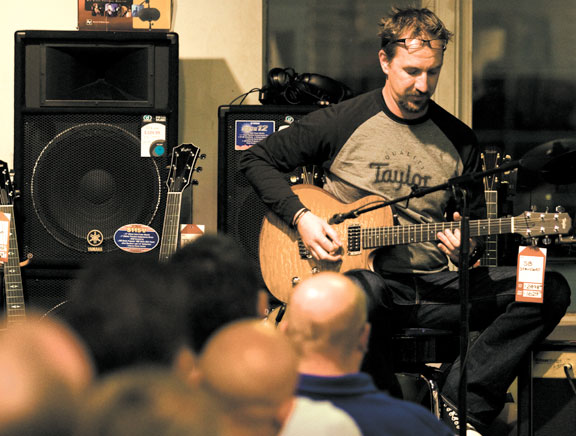
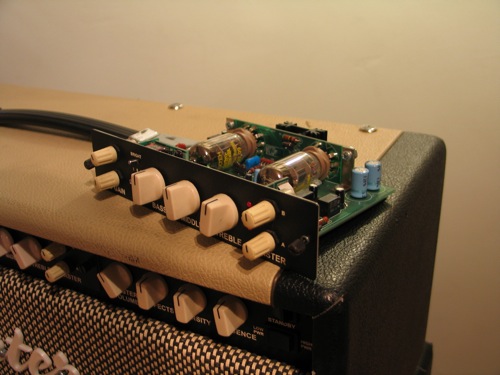
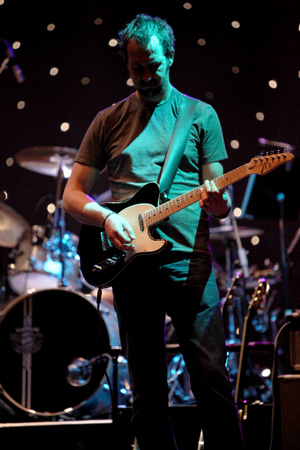
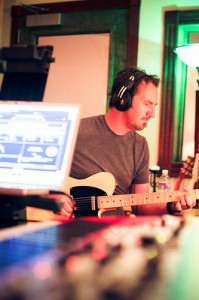
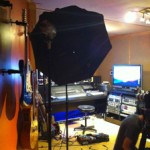
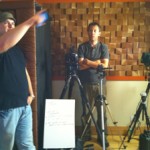


Follow Me